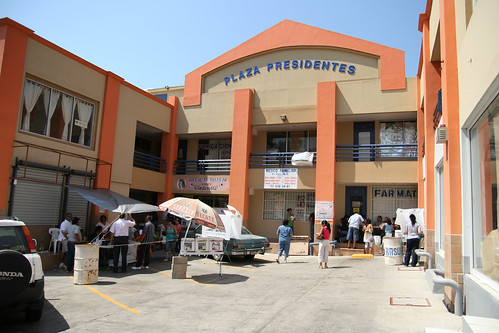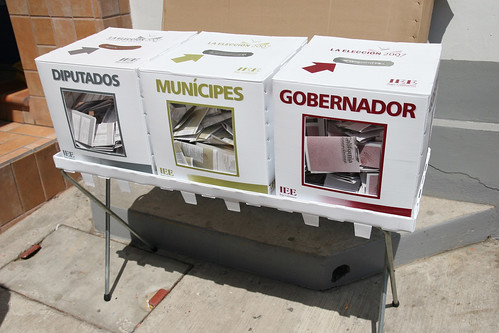Second to family, the best part of Tijuana is the food. My mother-in-law is always cooking, always serving. Always. Seriously, she doesn’t stop. From the moment someone walks in the door, some sort of food already warm on the stove will be placed in front of them whether they’re hungry or not. It’s a beautiful thing. Lucky for me, the food is quite good :) She’s famous for the after-dinner line “Hago unos hotcakes? Should I make some pancakes?”
Category: tijuana
It’s impossible to point a camera in any direction in Tijuana and not find something interesting. It’s a cultural war zone, the mezzanine between two worlds. But in the middle of this political purgatory, there are people. And my Saturday routine is about family.
The song used in the video (On Our Own by September Malevolence) is available as a free download on Last.fm.
This summer, I met a 17-year-old boy named Jay at a DIF shelter in Tijuana. He had spent 15 of his 17 years in the U.S., brought from Mexico at age 2. Working alongside KPBS reporter Amy Isackson, we recorded his story and photographed him (all except his face because the shelter administrators wouldn’t allow it).
View photos from the Tijuana youth shelter on Flickr »
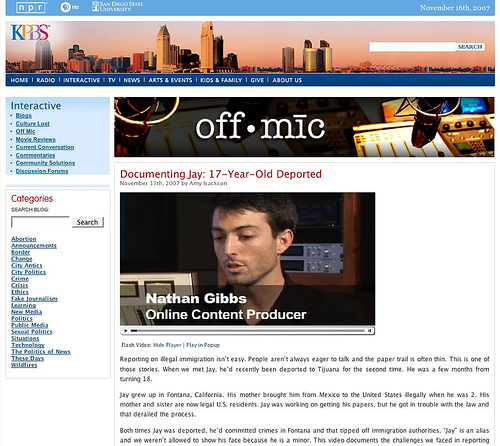
We pulled into the parking space and hopped out. I slung the camera from my neck, twisting the branded strap so the words “Canon EOS Digital” didn’t show.
I’m fascinated by Mexican elections. It’s so simple and straightforward. Just paper ballots and a black crayon.
 |
I watched the 2006 presidential election count in my mother-in-law’s neighborhood. She was serving as a poll worker. Representatives from each party were present, collectively counting and sorting each ballot. The public oversight, caution and security I saw that day inspired much more faith in the final count than the electronic voting machine I would use months later.
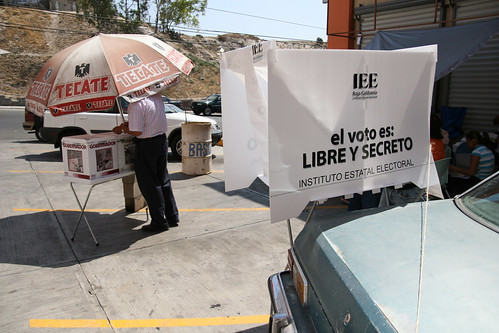 |
This time, I had my camera. I wasn’t quite sure if I was allowed to be wandering around photographing everything. As I tried to join Rosario in the makeshift voting booth to photograph the ballots, a poll worker asked me to move away. As I framed up a nearby shot, he told me I wasn’t allowed to take photographs.
I heard a woman mumbling a few feet away, “Ustedes viniendo acá, cochinando la elección. You people come here making it a dirty election.” I turned and asked what she was referring to. She seemed startled that I was challenging her passive-aggressive muttering. “Qué estoy haciendo mal con mi cámara? Quienes son ‘ustedes’? What am I doing wrong with my camera? Who are ‘you people’?” She didn’t catch the quotation marks in my inflection, and responded by saying “Soy ciudadana como tú. I’m a citizen same as you.” She walked away with her daughter before I could say any more.
As we got in the car to leave, I noticed a teenager in a group of poll workers with a video camera. My first thought was that the poll workers acted hypocritically, letting her shoot video but not letting me take photos. But when I realized she was shooting the license plate of our car, it all made sense. The woman had been referring to our California plates, showing contempt for us as “outsiders.”
 |
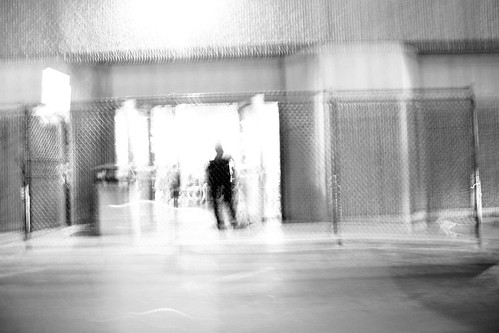
U.S. Customs and Border Protection, originally uploaded by Nathan Gibbs.
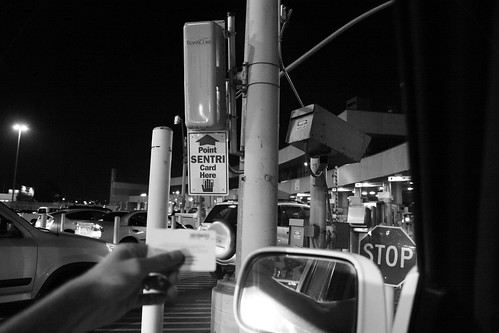
Before approaching the border agent in the SENTRI lane, the RFID card and windshield-mounted sensor show the agent a photo of who to expect. For many, there’s a bit of mystery surrounding the golden ticket we call the SENTRI pass. To get it, you have to submit your weight in paperwork — birth certificate, passport, social security card, drivers license, residence and employment history, vehicle docs (VIN, plates, registration, insurance), proof of residence, employment, pay stubs, bank statements, etc. They run a background check and laser-scan your fingerprints. It’s straight out of Gattaca.
[ view more images of border crossing | slideshow ]












